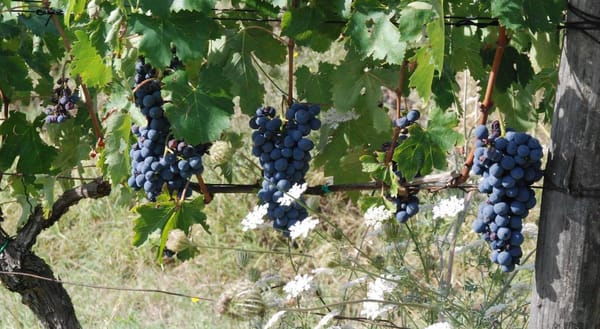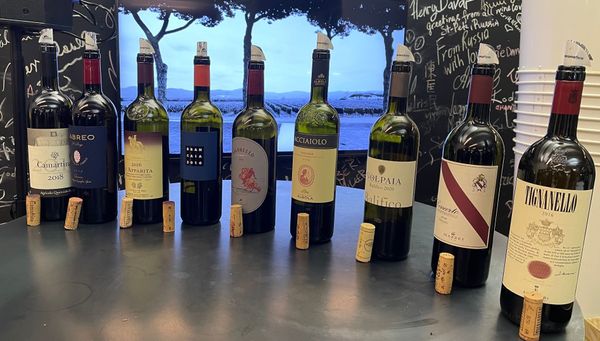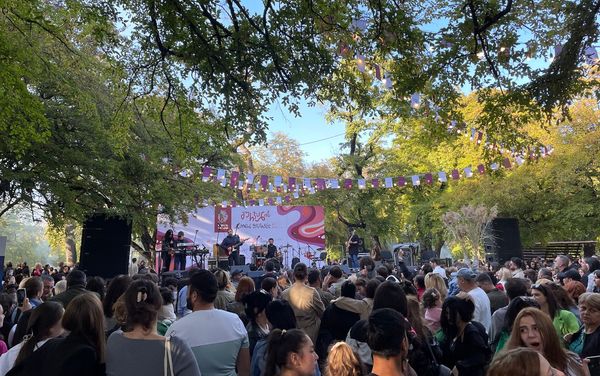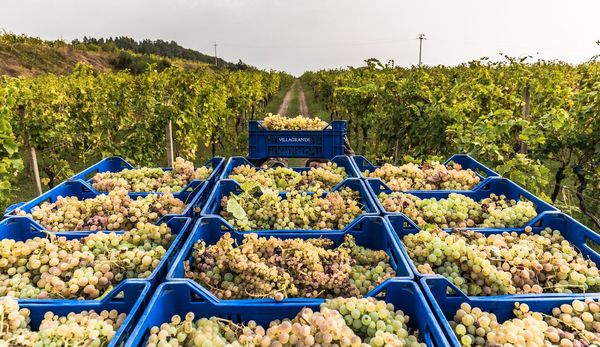📝 Derthona 2.0: The Story of Timorasso and the Road Ahead
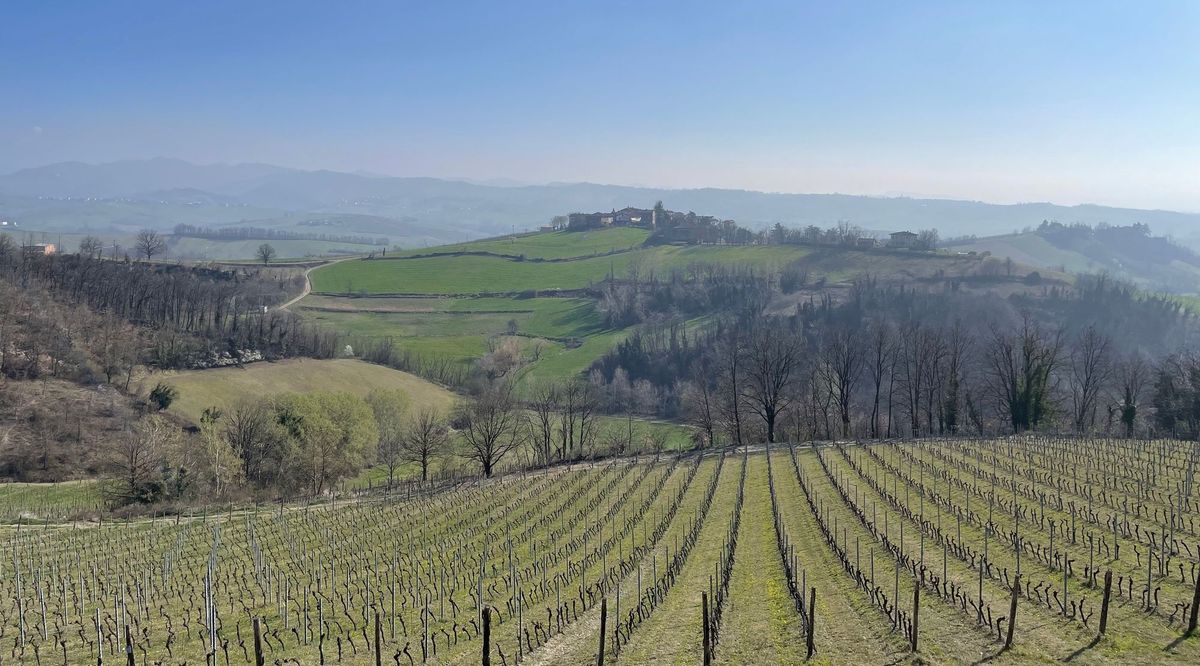
Timorasso represents one of the great comebacks of the Italian wine scene. All but lost to the archives of history it was rescued by winemaker Walter Massa and not only kept in circulation harvest after harvest, but elevated to the podium as one of the country’s great white wines. His success inspired such a revival that growers are now restructuring their appellation for a bright new future. I chart the changes.
At the turn of the century, allegedly a mere three hectares of Timorasso remained in the world as the variety teetered on the brink of extinction. Growers in Piedmont’s Colli Tortonesi, the variety’s historical heartland, had gradually culled its presence, largely consigning it to viticultural oblivion. Today, however, that critical juncture stands in stark contrast with an impressive new reality: dozens of wineries now showcase wines from Timorasso and are working on the next phase of its territorial and commercial identity - Derthona 2.0.
The speed in which growers here have manoeuvred Timorasso into the consciousness of Italian wine lovers, impresses. The variety now sits with ease on the lists of top sommeliers, holding its own against the world’s serious white wines. The wine’s future is exciting, especially as investment from outside the area flows. The compounding effects of wider distribution and stronger brand development initiatives should cement its rejuvenated status. Of course, an element of good fortune exists, possibly in the convergence of social media and the trade’s relentless quest for new varieties, but these achievements are no accident. In the glass, the variety can offer a degree of intensity and mineral complexity capable of taking consumers by surprise. With hard work in the vineyards and cellars, it can deliver show-stopping wines.
Aromatically there is plenty of diversity, ranging from green apple and sour citrus to peach and luscious apricot. Typically, wines exhibit generous floral character, with hawthorn, orange blossom and honeysuckle common. With time, the wines can develop hydrocarbon notes (not unlike aged Riesling) and, depending on the vintage, appear fairly early in the journey, even after a few years. Layered atop, one finds the usual markers of winemaking, but in general, the trend is to produce wines with as light a touch as possible, allowing the variety to speak independently.
Why, then, given its charms, had Timorasso all but disappeared? The reasons appear straightforward. When things get tough, as they have done at various historical inflection points, grape varieties like Timorasso find themselves exposed to the indiscriminate flick of the accountant’s pen. The toiling contadino can be even more ruthless. Amongst other misdemeanours, Timorasso ripens unevenly. Making high-quality wine from a variety whose individual berries need constant attention, demands painstaking work. After much bluster, the result is often a lower yield. Thin skins also make the variety susceptible to rot. Perhaps Timorasso’s worst flaw, however, is its propensity for its berries to fall feebly from its stems, an infuriating scenario for the farmer entirely reliant on his crop. In recent years, the deluge of freak hail events has been known to exacerbate this varietal quirk.
As elsewhere, the viticultural carnage advanced by phylloxera in the late 19th and early 20th centuries proved devastating. Two world wars in quick succession further stifled the inter-generational transfer of hyper-localised knowledge. To confound things further, as people continued to migrate away from the Tortonesi hills in search of economic opportunity in cities like Turin, Milan, Genoa, and beyond, the use case for troublesome varieties like Timorasso declined rapidly. As Italy’s Mezzadria system faded from view in the 1950s and 60s, making way for increased mechanisation and entrepreneurialism, the prevailing visions for the future held little currency in Timorasso.
What Timorasso needed was a champion.
When Walter Massa inherited his vineyards at age 30, Cortese was the dominant white grape variety planted in the Colli Tortonesi. Favoured for its fashionably high yields, it played support to the red Barbera, which in turn played support to the Barbera planted closer to Alba and Asti. Timorasso persisted as a relic of another winemaking era, and few felt compelled to look backward. National and international markets were opening up and nobody considered Timorasso a serious participant of the future. Perhaps jaded by the abundance of red wine and frustrated by attempts to produce a truly exceptional Cortese, however, Massa set out to experiment with alternatives. He delved into the history books, past the turbulence of the early 20th century, to an earlier golden age in Piedmont’s viticultural story.
Fourteenth-century agronomist Pier de Crescenzi articulated that “the jewel of Tortona agriculture are the white wines’ and assuredly declared they had a “splendid future.” Records suggested it had been planted with pride right up until the late 1800s. With a legacy approaching 500 years in the area, Massa was convinced something was being overlooked. Legend states that only around 400 vines remained in 1987, dispersed throughout the hills surrounding Tortona. He began to take cuttings, many of which came from un-grafted plants. That same year he produced 570 bottles. In 1990 he planted Timorasso vines in a 1.4-ha plot called Costa del Vento, a vineyard now famed for producing one of the great expressions of the variety.
While most of the industry laughed at this mad curiosity, then criticised the folly of its growing appeal, Massa plugged away, learning from each passing vintage. He recalls how his first year’s production went to plan, but fermentation in the second took ages to start. Over time, he learned Timorasso required a different approach in the cellar, and demanded a different relationship with the winemaker. The key, it seemed, was patience. Slow fermentations, extended skin contact and plenty of bâtonnage.
As experimentations continued a small collective of acolytes and intrigued followers emerged. Ennio Ferretti had also planted a Timorasso vineyard in 1985, the same year he began to farm organically. The first harvest would not appear until 1988. Daniele Ricci, whose grandfather had purchased a farm in the 1930s watched and learned with interest. In the 1990s Ricci converted his eight hectares to organic farming and began his journey with Timorasso. Elisa Semino, curious by Massa’s progress dedicated her university thesis to studying Timorasso. Today she is blazing a trail at her family winery La Colombera, producing outstanding wines. Other producers took the gamble too. Alessandro Poretti, winemaker at the organic co-op Valli Unite refined his knowledge, while Luigi Boveri converted a few hectares of his family estate over to Timorasso. Andrea Mutti and Paolo Poggio also pursued their own Timorasso projects.
Throughout the 1990s and 2000s, the timeless method of trial and error began to deliver results. As the panic and adrenaline of navigating early vinifications wore off, our protagonists were able to contemplate the longer-term structural requirements for cultivating Timorasso in line with commercial realities. Staring them back in the face was the importance of site. There are all sorts of reasons why the farmers of the past matched variety and site, but suffice to say, the Timorasso of old wasn’t necessarily planted in the best possible conditions. To those looking to produce excellent wine at a sustainable quantity, it became increasingly clear that if the variety was going to have a future it needed an in environment in which it could prosper.
Shelter from strong winds and adequate ventilation to ward off rot are critical to delivering a healthy fruit crop. Higher altitudes and steeper slopes, preferred by the variety, can be found in the rolling hills of the Curone, Ossona, Borbara and Spinti valleys. This also helps nurture Timorasso’s complex aromatic profile. On the palate, the clay and limestone soils that characterise the area help impart a fuller, fatter texture.
Today, around 330 hectares of Timorasso are planted in the Colli Tortonesi DOC, with a further 150 set to come online over the next few years. With the foundations built, a new era of commercial expansion is underway. Established names from the Langhe have moved in; Spinetta, Roagna, Vietti, Borgogno, and most recently, Pio Cesare, are expanding their portfolios and see more potential than in other regional varieties such as Arneis and Favorita. As the vines mature and growers tweak and iterate their proposition, the wines will likely improve. There is a palpable sense of confidence partnering the current transition, and justifiable optimism in the air.
In anticipation of growth, the Consorzio has embraced the excitement and committed to a new strategy. Steps are being taken to lay out a coherent approach for both producing and communicating the prospects of Timorasso. Increased time in the cellar before release has been codified into the DOC, allowing for additional evolution while also incentivising battonage. The results should deliver greater integration, textural depth, and complexity. The aim is to reach a million bottles a year while maintaining quality.
In terms of promoting identity, the direction of travel is undoubtedly moving towards establishing an independent appellation outside of the parameters of the Colli Tortonesi DOC. Although there is little appetite at the national and European level for creating a new DOC, producers are content with the establishment of ‘Derthona’ (the Roman name for Tortona) as a third official sub-zone, joining Terre di Libarna and Monleale. Beyond this, a two-tier quality pyramid will pitch wines from the ‘Derthona’ sub-zone above a ‘Dertona Piccolo’ (essentially a baby wine from younger vines), a scenario that faintly echoes the organisation of Chablis.
In the glass there are two distinct styles emerging. Firstly, Timorasso produced as a light aperitif, shows lemon citrus with sharp acidity and a pleasant mineral texture. Conversely, Timorasso produced for concentration and power, can deliver a full, exotic, golden style of wine resting on flavours of vanilla and sweet brioche. Which is best? This is clearly down to personal preference, but both have their place.
The figure of Walter Massa continues to loom large in Tortona. His work has been critical to the area’s renaissance, and his three single vineyard interpretations of Timorasso, ‘Costa del Vento’, ‘Montecitorio’ and ‘Sterpi’, continue to impress. At times, though, his story overshadows the hard work of the community as a whole. There are many small success stories that have helped pave the way to this exciting moment. Of the more than 30 wines tasted recently, I found the quality irrefutable.
The changes to the way Timorasso is positioned within the Colli Tortonesi DOC make sense. It is structured to allow the top wines to further entrench themselves in fine wine circles, while the Piccolocategory facilitates greater distribution and accessibility at a lower price point. Derthona 2.0 is underway and we should watch this space with fascination.

